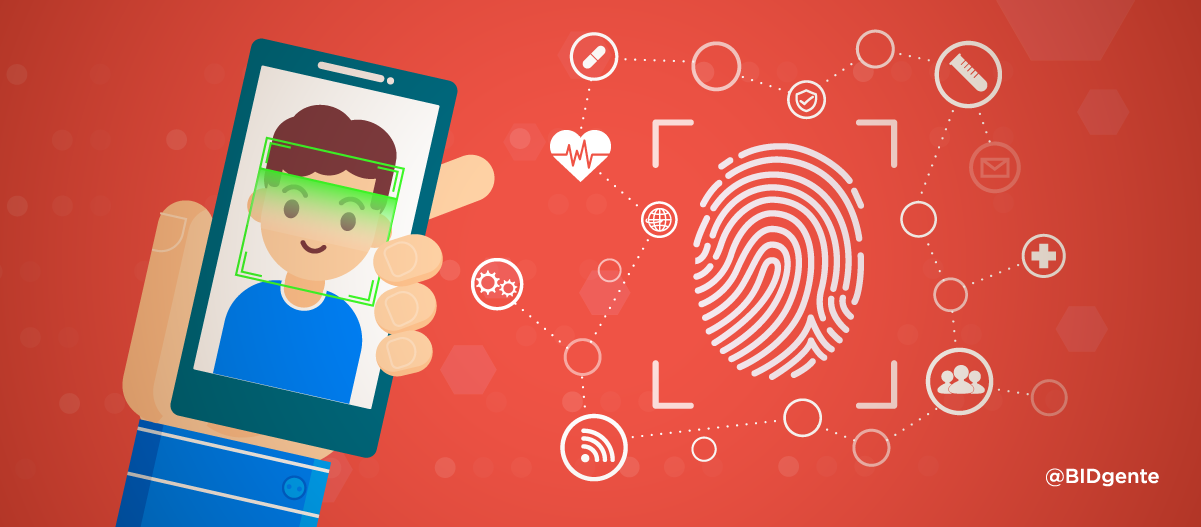In the urban slums of Bangladesh, BRAC Manoshi, a community-based maternal, newborn, and child health (MNCH) initiative driven by community health workers (CHWs), conducts home visits to detect, prevent, and treat complications during pregnancy. While this programme has had sweeping successes in improving health outcomes, it is often challenged by the inability to accurately identify pregnant mothers and provide life-saving healthcare for them and their babies.
The Missing Component
Accurate patient identification is a fundamental building block for every intervention in healthcare. Yet 1 billion people have no formal identity, making them invisible in the eyes of the world. Impact organisations have tried to address this gap through substitute ID schemes such as:
- programme-specific IDs like vaccination cards, physical QR codes, and patient booklets,
- personal identifiers including names, date of birth, and postcodes.
However, the former fails when the IDs are lost, stolen, or damaged; and the latter is simply untenable as truly unique IDs when names overlap or can be spelled in multiple ways. For instance, more than 60% of males in a few places are called some variation of the same name, and often patients do not know their exact date of birth, or slums and villages lack formal postcodes.
The (Cautious) Role of Biometrics
One potential solution to this challenge of identification is biometrics. A growing body of evidence demonstrates that biometrics has a huge potential to build solid ID systems in short periods of time, improving aid delivery and saving lives. This is especially true in remote areas, sudden migration situations, or when ID cards cannot be a requirement for the delivery of services, as is often the case in Latin America and the Caribbean. The World Food Program’s SCOPE project, for example, is biometrically verifying the distribution of food aid to refugee recipients. With the introduction of biometric IDs, previously ‘invisible’ people can access essential, life-saving services.
However, decision-makers looking at biometrics to solve identification problems need to seriously consider potential risks. Biometrics can identify an individual by measuring unique characteristics like fingerprints or iris (physiological traits), and voice or gait (behavioural traits). Therefore, the heightened ability to accurately identify people can also expose them to a higher risk of danger through misuse of data, such as using identification for purposes different from the programme’s original intent.
While the benefits of unique identification through biometrics are manifold, how do we responsibly walk the line between overreaching with its application, and leveraging it as the best tool for the job? Above all, how do we ensure we do no harm to the most vulnerable populations? We can start by asking critical questions around true need, accuracy, privacy and data security, and interoperability.
Is There a Real Need for Biometric Unique ID?
Sometimes biometrics isn’t the right or best tool for the programme needs. It’s worth asking: are existing no-tech identification methods sufficient? If yes, physical IDs with a few key fields like name and date of birth might suffice. Would other lower tech identification methods solve existing challenges? If yes, barcodes or QR codes are viable options. Would the project outcomes be compromised without reliable, unique ID? If yes, then consider biometrics.
Is it Appropriate for the Population you’re Trying to Reach?
Using biometrics in developing country contexts, particularly in low-resource frontline environments, is extremely challenging due to both physiological factors like scarred, worn, or burned fingerprints, and environmental factors like heat, dust, or humidity. In our work, we have found that most fingerprint biometrics technology, despite claims of near-100% accuracy in marketing materials, have shown error rates 10 to 20 times greater when used in challenging environments, rendering them untenable for frontline purposes. Without technology built for purpose, biometric interventions are doomed to fail.
Are People’s Privacy Rights and Data Security Respected?
By any standard, biometric data is highly sensitive personal information. As such, keeping biometric data secure and ensuring the privacy rights of individuals are respected is central to any biometric intervention. Good privacy practices should embrace key principles such as obtaining explicit, informed consent, and honouring data subject rights like the right to be forgotten. For patient security, a good rule of thumb is to use modern data protection standards like two-factor authentication and data anonymisation/pseudonymisation across datasets. Read this piece on best practices to learn more.
Is the Biometric System Interoperable?
At its simplest, interoperability means that two disparate systems can talk to each other. This enables data sharing between impact organisations and government ministries, prevents duplicate enrolment efforts, and ultimately eliminates the problem of “vendor lock in” by private companies. Lack of interoperability can result in huge consequences. For example, in Nigeria, duplicate biometric registration exercises have cost the government billions of nairas, wasting precious human and financial resources. Any biometric intervention should either use interoperable standards such as the ISO 19749-2 standard, or store images in a standardised format before processing them with proprietary technology.
Towards an Ethical Use of Biometrics
In 2015, BRAC’s MNCH programme partnered with Simprints to use fingerprint biometrics to identify pregnant women for antenatal care visits. With the touch of a finger, CHWs were able to identify patients and retrieve their health record on their smartphones. Preliminary results showed a significant impact on the delivery of essential health services. For instance, maternal healthcare coverage for beneficiaries increased by 38%.
Ultimately, biometric technology can either cause incredible harm or create lasting social impact, depending on the approach taken. Therefore, the contextual questions we have explored here matter greatly, more so than the general “potential” of biometrics isolated from human cases. In light of the doubled-edged nature of technology, we need to ensure responsible, ethical practice is in place—we owe nothing less to the people we’re claiming to serve.
Tell us of projects using biometrics ethically and successfully in the comments section or mention @BIDgente on Twitter.


Leave a Reply